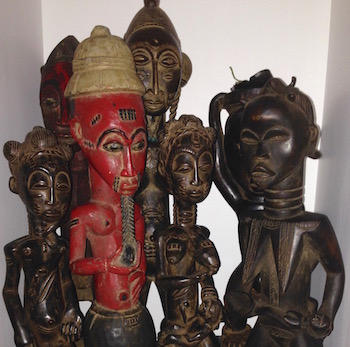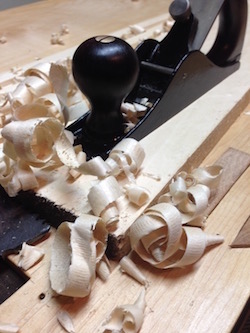Sloyd and Kwanzaa share similar principles. An odd kinship exists between the two philosophies. Both have influenced people of many cultures all over the world. Sloyd or slojd is a Nordic educational philosophy. Kwanzaa is a celebration of people of the African diaspora. They both have principles that embody the development of the individual as self-sufficient and self-confident. These individuals go on to share that knowledge with their families and communities.
Influence of sloyd and Kwanzaa
The philosophical influences of sloyd and Kwanzaa affirm some of my personal beliefs. I love the idea that the development of the mind and ultimately the hand is important. Out of necessity, my path toward self-sufficiency or going solo developed early in my life. I continue to live that way.
My observation of the institutions and people entrusted to uphold the standards of the nation is this: they failed.
This break from the world view helps me identify the moral damage caused by these institutional failures. Questioning obedience to undeserved authority helps me navigate its confusion and absurdity.
However, it does not prevent me from thinking for myself as a black woman, citizen, woodworker, friend or family member.
What does that have to do with sloyd?
Sloyd, emphasizes the collective – meaning every one learns from another one. The values taught in the classroom and the workshop were carried to the home. Importantly, the philosophy was accepted and adapted for the good of all.
The major thought is that engaging in physical labor leads to intuitive thinking, industry and physical strength.

This educational philosophy was promoted by Uno Cygnaeus in 1865 in Finland. Otto Salomon established a school in Sweden and wrote a handbook in 1871 devoted to teaching sloyd. It sought to give boys and girls the mental and physical skills in the manual arts. This was meant to apply to the rest of their lives.
The idea appears simple but sloyd evolved around how children learn. Initially, it was not devoted to the production of any item. Rather, sloyd “taught” mental processes including thinking and reasoning. Young children were instructed this way until they left school at the age of 16. Importantly, the aim was to pass on what they’ve learned. They did that by teaching in the manner of sloyd to their family members.
That is a simple interpretation of sloyd education.
This philosophy was adapted and reinterpreted in schools all over the world including the United States.
Think about it: a black girl being taught the manual arts in the sloyd tradition in an urban, public grade school! It was a continuation of the early training I had with my dad.
Go solo for today
To me, self-sufficiency demands the questioning of any philosophy, even time-honored ones. It guards against complacency and moral disengagement.
You know what makes unchallenged cultural norms, disguised as conventional thinking, take a step back? It is a question, a concern, and appreciating the value of change.
The kinship of sloyd and Kwanzaa
Kwanzaa was founded by an American, Maulana Karenga, in 1966 during the American civil rights movement. It adapted the communal practices of Africans in their villages for sustenance and survival. Since that time, it has evolved into an inclusive Pan-African cultural (non-religious) celebration.
The principles emphasize freedom from the seeds of self-doubt and self-hate. They are:
- umoja (unity)
- kujichagulia (self-determination)
- ujima (collective work and responsibility)
- ujamaa (cooperative economics)
- nia (purpose)
- kuumba (creativity)
- imani (faith)
This is self-reliance and skill building. It is recognition of the things most needed to preserve individual and collective humanity. These help to build up each home and every community.
It is obvious that the collective-minded cultures of sloyd and Kwanzaa are connected. Both mean to preserve and pass on their respective legacies to subsequent generations.
Relevance of the past to the future
The Triangular Slave Trade: years between 1400 to 1833
As part of the second or middle passage of the international triangular trade of the most horrifying kind, Africans were traded. During this time, over 2 million souls died in transport. Those that were still alive on cargo ships headed to the American colonies in 1619 were deposited in Virginia.
From there the horror continued.
Considered less than human, these gifted people were forced to engage in physical labor. They also invented, built, created, and innovated during their toils.
Consider this, many important buildings and furniture in this country were built by Africans and their descendants working under institutional and state terror.
These African artisans, craftsmen and craftswomen were not taught woodworking, carpentry, metalworking, and other skills in slavery.
They already knew.
The ancestors brought this knowledge with them.

Construction, advanced wood joinery, carving, lost-wax casting, mathematics, and other relevant skills had been used extensively in Africa, the motherland. Denial of these ancient artisans’ skills and knowledge continues to this day!
These exceptionally skilled men and women were identified and sought after for their work. Most inventions were incentivized by ensuring survival or made under threat of death. The inventor was not rewarded for the fruits of his labor nor could he assert ownership.
Likewise, she did not benefit from registering her creation rights. She was prohibited from applying for or receiving a patent for her work. As a consequence, there was no related wealth generation for the enslaved person’s legacy. That was too often denied through violence and specific legislation. The slave-holder or a facsimile gained and kept exclusive rights to these discoveries. History documents this.
No acknowledgement or compensation – that was the law of the land.
What was being taught in bondage was to never question authority. The right to speak, even in the tongue of the motherland, was denied. What was reinforced was learned helplessness and loss of individual autonomy. Many more millions of souls died asserting their human-ness.
Sadly, so much has been lost. But know this: the proven genius of our ancestors courses through our veins. It is not too late to recover and renew our ancestral vow to remember who we are.
Skills are innate. Aptitude is well-developed. And the DNA of a people has not died.
These beings, our ancestors – our human ancestors – still lovingly serve as our conscious guides.
How the principles of sloyd and Kwanzaa apply to today
Through dedication of effort and pure will, we can rebuild mental power and self-discipline. Then we, all of us, can use those powers to remedy the collective challenges of:
- underemployment,
- under self-appreciation,
- underpayment for past and ongoing services.
We accept the wisdom of the collective – meaning each one, teach one. Then values of the classroom and the wood shop will be carried to the home. However, we have power as individuals, too.
We have an obligation to not waste our inherited gifts
A philosophy or belief, from the heavens to the streets, works when you have enough truthful information to determine if it is for you. This is what I believe.
How do I do that? When I think of, for example, the few ways to do good, I am discerning. And that means knowing what is actually good.
Advance is difficult and departure from the accepted path is dangerous; but difficulty and danger are old acquaintances. – Elizabeth Catlett
❤️-Shirley J


2 thoughts on “● Sloyd and Kwanzaa”
DNA and BLOOD LINE will be here for generations and generations, nobody can ever take that away from us.
Yes.
Comments are closed.